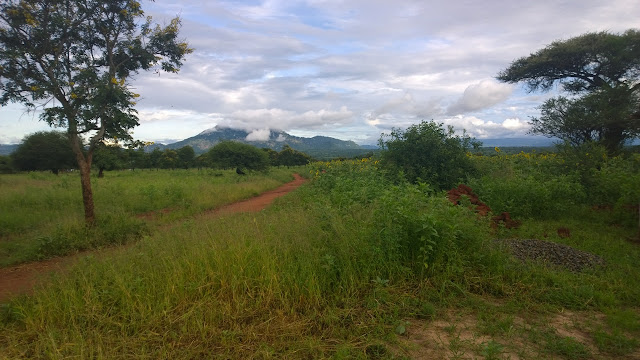Tungamalenga
[From 24 July]
“Tungamalenga Rice is the finest in the country.”
This is what people in the village are all saying these days. The rest of the country agrees – at least according to the locals. While this is my fifth time to Tungamalenga, this marks my first visit to the fields.
I followed the Mchungaji’s wife on a two-track road south out of town, passing the primary school and the turn off to Mzee Enoch’s house. As we walked the mile and the half out, the palette of the landscape shifted. The browns and tans I’ve always associated with Tungamalenga in July/August slowly shifted to various shades of green.
Trekking across the thin mounds separating rice paddies we eventually came to her garden. The rice had been harvested, within a day or two the beans would be ready for picking as well. Earth had already been turned –likely by hand- and rows of tomatoes planted. Day in and day out, she and most people living here march to and from the fields.
As far as gardens go, the Kikoti’s are fortunate in that theirs is but a short distance from their home. For many in Tungamalenga their crops are a two-three hour walk away. Between coming and going they walk for four to six hours on foot for a day of work in the fields. The bulk of the crops grown are used to feed family, neighbors, and livestock. Surplus is either traded or sold for a meager profit. This is subsistence agriculture.
Tungamalenga as we know it today is the product of one of the largest human resettlement programs in history. Under the moniker of ‘Ujamaa’ or ‘Familyhood,’ the newly formed Tanzanian Government, under the leadership of Mwalimu Julius Nyerere, forcibly moved people who had been living in small, scattered settlements across the entire country. Huge swaths of land as the population was condensed into villages [a process termed villagization] in which, it was hoped, idealized socialist society of prosperity and interdependence would emerge. With fertile soil and plentiful water from nearby mountains, Tungamalenga and surrounding villages like Makifu and Mahuninga became ideal places to settle those who had once lived in what is now Ruaha National Park.
With tourism revving-up in the southern highland, Tungamalenga is poised for another round of rapid transformation. Already, new lodges and camps are popping up throughout the area. The stream of safari cars shuttling people to and from the park has increased noticeably in the past few years. If the perpetually rumored tarmac road and electricity finally come to the village, that trickle will likely become a torrent.
As this next round of development occurs, one wonders what will happen to the wakulima who make the daily hike to their farms. Will anyone take notice of their plight or will they appear as little more than a blur as Lady Progress speeds on by?



Comments